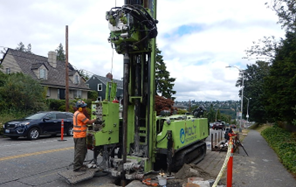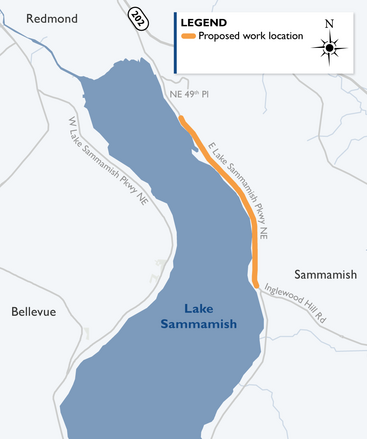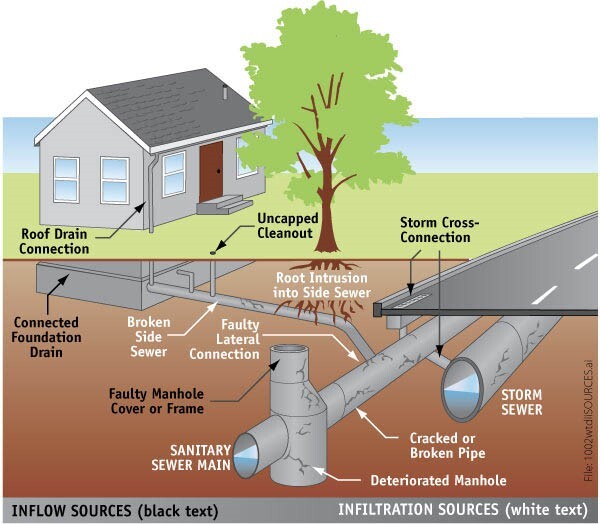|
May 2024
With the sun shining and the rainy season almost behind us, King County’s Sammamish Plateau Diversion Project team is looking towards sunny summer days of field work.
Project Update
Our project team continues to work on developing project options. Once the project team has identified project options, you will have opportunities to review them, ask questions, and give us feedback. Currently, we expect to share identified options in fall 2024.

Moving into field season
This summer, the project team will perform soil and groundwater investigations with drilling equipment. Crews will use drilling equipment to obtain samples at key locations along East Lake Sammamish Parkway Northeast (see map below). They will install groundwater monitoring wells at these locations and visit them to take readings on a periodic basis to better understand the conditions under the surface of the road.
This work may require temporary single-lane closures on East Lake Sammamish Parkway between Northeast 49th Place and Northeast Inglewood Hill Road during the day. We anticipate that work at each site will take about one to two days, with a total duration of about two to three weeks, depending on permit and field conditions. Stay tuned for more information and the work schedule as we get closer.
|
 |
You may be wondering if soil and groundwater information is already available through other projects like the East Lake Sammamish Trail and projects on the roadway. Wouldn’t these projects have done this work already?
Project designers look for existing data on soil and groundwater from a number of sources. Finding the right information could save the project time, labor, and budget, and reduce community impacts. However, even if they find information, it might not help a completely different type of project. Road and trail designers may not perform surveys as deep as wastewater pipes are typically installed.
Know anyone who will be affected by this work? Please forward this email to your friends, neighbors, and community groups. If you were forwarded this email, please consider signing up for our email list.
Did you know that your wastewater and stormwater flow through separate pipes?

Understanding our sewer system: keeping wastewater and stormwater separate
In the East Lake Sammamish area, different systems handle water from different sources.
The wastewater system collects and cleans dirty water that goes down the drain in homes, businesses, schools, and other buildings. That dirty water goes to a regional plant for treatment. In King County’s regional service area, treated water is discharged deep in Puget Sound.
Sometimes rainwater and groundwater can get into sewer pipes a variety of ways:
-
Prohibited connections of storm drains to the sewer system
-
Leaky pipes on private property caused by settling, age, or tree roots
- Leaky sewer pipes or maintenance holes in the local or regional system
When this extra water gets in sewer pipes, it means less room for wastewater. This is called infiltration and inflow, or I/I. Wastewater districts spend extra labor, fuel, and money dealing with I/I. Equipment wears out sooner. In large storms, excess stormwater and groundwater can push wastewater systems to overflow.
Wastewater managers look for ways to keep the rain out of the sewers. You can too, simply by making sure your roof and yard drains are not connected to the sewer and inspecting your system regularly. If your plumber finds problems, fixing them will prevent problems for your property and for the local and regional wastewater systems. You may also be able to keep your rainwater on your property with rain gardens, rain barrels, and cisterns.
|
We're here for you!
We know that large construction projects can be stressful for communities, and there are a lot of construction projects going on across the Eastside. Our project team is committed to being available and continuing to work with neighbors, businesses, visitors, and commuters every step of the way. We will be here for you all the way through design and construction and into operations. Feel free to contact us at any time!
Contact us
Monica Van der Vieren,Community Services Lead
Monica.VanDerVieren@kingcounty.gov, 206-477-5502
Visit us at kingcounty.gov/SammamishPlateauDiversion
|